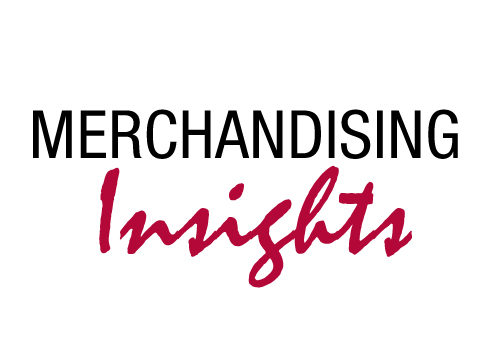Would you like an extra $30,000 to promote your store every year? There’s a rather large and open secret in the natural products industry: independent retailers are consistently losing out on their share of cooperative advertising dollars that manufacturers have allocated to spend on them. But, if manufacturers are ready to fork over these dollars to you, what do they do with them if they aren’t writing you a check? Let’s take a closer look.
How to Figure Your Co-Op Ad Dollars
First, let me explain where the $30,000 figure comes from. The average independent retailer generates annual sales of more than $1 million. Assuming you have an annual 60-percent cost-of-goods percentage, that’s $600,000 in wholesale purchases per year. As a general rule, manufacturers earmark five percent of the wholesale value of their products to spend cooperatively with each of their retail partners to help promote the products to the consumer. Five percent of $600,000 is $30,000.
Of course, you must adjust for your particular situation, but the formula remains the same: multiply your gross annual sales by your cost-of-goods percentage, and then multiply that number—which is your total annual wholesale purchases—by five percent to reach your estimated annual manufacturer allocation of cooperative advertising money. Be absolutely clear: this is YOUR money.

Where’s My Money?
So, why aren’t these co-op ad-dollar checks made out to you arriving in your mail? Because there’s a string attached called “performance.” Just as you wouldn’t give your child his or her allowance without completing some chores, or pay your employees to sit around the back room and smoke all day, manufacturers don’t want to pour money down a drain for which they have no hope of seeing an investment return. You must convince the manufacturer that you are doing something to actively promote their products to your customers. But, more on this later. Let’s take a look at where your so-far unclaimed co-op dollars are going now.
There are two basic paths your co-op money takes: either it flows to your wholesale distributors or to your better-organized or more influential competitors. The law of the squeaky wheel applies here. Every manufacturer that allocates co-op ad dollars decides on its annual budget and, by the end of the year, expects to see that amount on the line item marked “co-op ad expense.” They do not, and cannot, know which stores are not claiming their fair share of co-op ad money. Manufacturers can only know who is claiming these dollars.
If you don’t claim your co-op money, the manufacturer doesn’t say, “Well, we’ll just hold John’s Health Foods’ money aside, and put it into next year’s budget.” No. Instead, when Distributor A calls up and says, “We have a flyer program we’d like you to participate in,” your manufacturer says, “Well, I still have some unspent co-op ad money, so sure, I’ll put it into your flyer.” Or, your more industrious competitor down the street has reached out to the manufacturer to ask them to participate in the store’s particular program.
Ask and You Shall Receive
So, here is where things get interesting. I work with independents all across the country and see very clearly and consistently that the co-op ad money flows freely when it has a place to go. When manufacturers see that you offer a viable option for their co-op ad spending, they are more than happy to send those funds your way. All that’s needed is for you to present a credible idea the manufacturer believes it can trust. There is no magic here. All that’s required is some planning, focus and execution. The odd thing is, to me, how few independents realize how simple capturing co-op ad dollars can be.
Getting Started
Your co-op ad program can take many forms—manufacturers are generally open to anything that works—so you are free to fashion a plan that fits your store. If you sell lots of food, and have a kitchen, it may be easy for you to offer regular food demonstrations. If you sell a lot of supplements, setting aside a dedicated rotating monthly promotional area near your supplement buyer’s station, or at your cash wrap, featuring signage, product information, and a sale price may be all you need to do. Advertising in your local media, of course, also counts.
The most powerful programs are truly programmatic; that is, your idea spans the entire year as opposed to being just an isolated gesture that fades as soon as the deal is over. Take a look at the WholeFoods Magazine annual calendar, for example. Every month has natural promotional ideas. October has World Vegetarian Day, November Digestion Day—the day after Thanksgiving!—and the first day of winter in December, all suggest product tie-in opportunities your manufacturers should find worthwhile. Better yet, think of the calendar seasonally; from quarter to quarter, you can move through promoting winter cold and flu remedies, spring digestive cleansing, summer immune-building antioxidant diets, and fall back-to-school stock-ups. One very useful reference guide is Chase’s Calendar of Events, published annually (www.mhprofessional.com), with multiple ideas for every day of the year. Browsing through the hundreds of ideas, you should be able to develop a concept for your own unique annual theme.
Take a tip from our military. Give your program a name to make it memorable, and give it form and shape: “John’s Healthy-Every-Day Promotional Calendar.” Use your location as inspiration for your program’s theme. Do you have a local sports team? Are there certain agricultural crops that your area of the world is known for? Which institutions are large employers in your area? Does the natural beauty of your surroundings attract seasonal tourists? Does your town promote a particular cultural theme? Check with your Chamber of Commerce for ideas that resonate locally and are specific to your piece of the planet.
Getting Organized, Getting Paid
The most effective way to ensure your program’s success is to plan your calendar for the year ahead. In the fourth quarter, for example, October through December, plan and secure funding for the following year’s program. Working with your department buyers, fill in your monthly promotions with particular products that match the themes you’ve selected. Of course, it is best to focus on your favorite vendors, and your best-selling lines, but leave room for new vendors and products you’d like to sell more of, as well.
Once you’ve laid out your annual theme, monthly focus, and relevant products you want to promote, it’s time to begin contacting your vendors. This may be a new task for your buyers, but with a little practice, they’ll find it easier than they thought, and very productive. You’ll be amazed at the positive results you get when you tell your vendor that you have a program…with a name! Manufacturers like nothing better than to have an opportunity to create incremental sales. From the vendor sales manager’s perspective, this is what it is all about, and participating in new promotional programs with new retail partners will help them meet their goals and make their bonuses.
The best part about this is that you become extremely efficient. You do all your planning and negotiating during one concentrated time period per year. Of course, you can modify and add products as you go along, but the bulk of your annual promotional calendar will be done and out of the way before New Year’s Day.
Taking Control
As I’ve described here, there is a different and highly productive way to approach your promotional activity as a retailer. You do not have to be satisfied taking the monthly specials that come your way, or waiting for your broker to submit chargebacks to the vendors that get reimbursed slowly at best. You can take your promotional destiny into your own hands with a bit of planning, vision and focus on execution.
Without a program of your own, you’ll be stuck with having to adhere to stiff minimum buy-ins to qualify for “case stack” deal allowances, or have to select from a prearranged list of items on a sale flyer, or worst of all, do no promoting at all. Any independent concerned about slipping sales and increasing competition has a potentially powerful tool at their disposal; a structured promotional program supported by manufacturer co-op ad dollars.
The best news of all is, as you succeed in increasing product sales, manufacturers will become eager to cooperate with you, making your annual job easier and more rewarding. You’ll not only enhance your relationship with your vendors, but also contribute a great deal to differentiating your store, increasing your sales and solidifying your continued success in your trade area.
Oh, here’s one final tip. Since many, if not most, independents fail to take advantage of manufacturer co-op ad dollars, those dollars become available to others. Instead of thinking “five percent,” think what your actual advertising and promotional costs are, and ask for that amount of money.
Good luck! WF
Jay Jacobowitz is president and founder of Retail Insights®, a  professional consulting service for natural products retailers established in 1998, and creator of Natural Insights for Well Being®, a comprehensive marketing service designed especially for independent natural products retailers. With 35 years of wholesale and retail industry experience, Jay has assisted in developing over 1,000 successful natural products retail stores in the U.S. and abroad. Jay is a popular author, educator, and speaker, and is the merchandising editor of WholeFoods Magazine, for which he writes Merchandising Insights and Tip of the Month. Jay also serves the Natural Products Association in several capacities. He can be reached at (800)328-0855 or via e-mail at jay@retailinsights.com. Jay will be speaking at NPA SOHO in Orlando, FL, on Thursday, Dec. 6 at 7:00 p.m., where he will be leading a roundtable discussion about current retailing trends and independent retailer concerns. On Friday, Dec. 7 from 2:45 to 3:45 p.m., Jay will be on a panel discussing the benefits of branding your own store. Jay will be exhibiting at SOHO at booth #210.
professional consulting service for natural products retailers established in 1998, and creator of Natural Insights for Well Being®, a comprehensive marketing service designed especially for independent natural products retailers. With 35 years of wholesale and retail industry experience, Jay has assisted in developing over 1,000 successful natural products retail stores in the U.S. and abroad. Jay is a popular author, educator, and speaker, and is the merchandising editor of WholeFoods Magazine, for which he writes Merchandising Insights and Tip of the Month. Jay also serves the Natural Products Association in several capacities. He can be reached at (800)328-0855 or via e-mail at jay@retailinsights.com. Jay will be speaking at NPA SOHO in Orlando, FL, on Thursday, Dec. 6 at 7:00 p.m., where he will be leading a roundtable discussion about current retailing trends and independent retailer concerns. On Friday, Dec. 7 from 2:45 to 3:45 p.m., Jay will be on a panel discussing the benefits of branding your own store. Jay will be exhibiting at SOHO at booth #210.
Published in WholeFoods Magazine, November 2012










